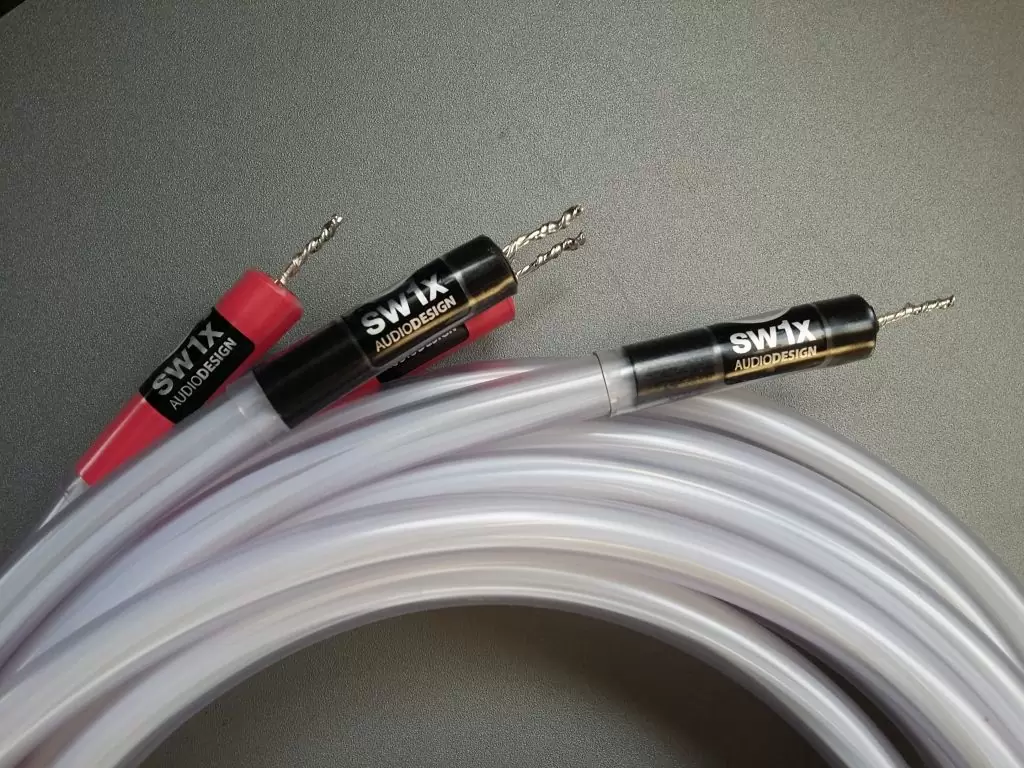The Sound of Copper vs Silver conductors: an approach by SW1X Audio Design™
Disclaimer: Everything stated below is of generalizing nature. Furthermore, we are assuming that everything else is close to being equal i.e. the geometry and insulation of a conductor of both copper and silver conductors is identical and that the conductors themselves are of similar age.
It is widely acknowledged that different conductor materials tend to have a different sound character despite no apparent differences in how these materials measure in terms of their frequency response. Frequency response is a very crude parameter by its nature which cannot measure all audible, interactive and idiosyncratic non-linearities and other properties. So using it as a main decision making-factor for suitability in audio of a material in question can a bit spurious to say the least. Feel free to replicate following experiment at home. Connect round conductor wires made of 99.99% OFC copper and 99.99% fine silver of identical thickness to a spectrum analyzer and measure their frequency response, consecutively.
The result is, one will find no difference in frequency response between pure copper and pure silver everything else being equal. Surprised?
We think that pretty much disproves the myth that silver alloy conductors are “brighter” or are “thinner on bass” relative to copper because of frequency response differences. The technology or science might not be good at measuring many aspects of sound but frequency response curves of both identical geometry conductors are pretty similar if not identical. Nevertheless, ignoring conductor geometry and other factors for now, there exists a distinct difference of sound when both type of conductors are conducting signals of music.
The main sonic characteristics of pure copper vs pure silver conductors can be summarized as follows:
While the sound of copper tends to be warmer and has more body it is a bit slower and less harmonically rich, silver does exactly the opposite. Silver tends to sound livelier, while offering more clarity and harmonic richness but at the cost of a colder character, thinner and lighter body. The differences in sound are clearly audible in the video clip below. The first sample is reproduced through an interconnect that is made of silver conductors and the second one that is made of copper.
Having crudely summarised the main sound characteristics of copper versus silver sound, one must acknowledge that we may be comparing “apples to pears” as there are many other factors that affect the sound signatures of both materials. Other factors may include : origin & age (new vs old), conductor geometry (round, flat, thickness, etc), insulation (dialectric material type, thickness, distance, etc), treatment & storage conditions (ambient temp, crygenics, annealing etc.), direction (wire drawing, manufacturing process), conductor purity – just to mention a few and many more.
It is difficult to imagine to live with a sound of either type of conductor if copper and silver sound exactly the opposite. It is really a matter of choice of other materials & components and customers preferences. Having said that, copper conductors tend to harmonise better with semiconductors, while silver tends to harmonise better with valves. For example, valves are warm sounding by nature (some are more and some are less depending on many other factors) and a silver conductor are naturally cold sounding conductor. If one combined them both, the sound is way maybe less warm than expected. If one combined valves with copper, the resulting sound may become overly warm and may appear less dynamic. On the other hand, if one combined silver with transistors, then silver tends to reveal deficiencies in linearity of transistors due to its semi-conductive grain structure, which is not ideal for long run listening sessions. Of course one can have a combination of silver and copper wiring as as with valves and transistors but silver and copper materials do not harmonise well together when wired in parallel. If one believes that one gets “the best of both worlds” of copper and silver sound one is mistaken as the resulting sound is characterized by dissonance of copper and silver “siblings rivalry”. There are ways around (as we harmonically combine copper & silver in our SW1X Special product versions and our SW1X AQUA line of cables) but that technique is of proprietary nature.
Now the cost factor- one ounce of 99.99% fine silver can easily cost about 10 times more than of copper. Consequently, cables made of fine silver conductors are not cheap and should theoretically cost 10 times more, ceteris paribus. Of course one can save on the amount of silver one employs in a cable but that comes at the cost of sound since the amount of silver employed is highly correlated with the presence or absence of mid bass. If one saves a bit here then the sounds becomes thin. So the direction of conductors made of fine silver becomes a crucial factor. Wire everything the wrong way and the sound will get even leaner and flatter in the mid bass, which is already a problem with most bare fine silver conductor now days. Does the higher cost justifies the performance of silver conductors? The answer to that question is better left to decide for each person individually as expectations and requirement differ on individual basis. What can nevertheless be said is it is difficult to think of properly designed high-end valve amplification without silver material which complements so well with valve type of sound.
Last but not least, on the account of silver plated copper as a cost effective solution- it is the worst that can happen to a sound of a conductor for the reasons stated above. Relatively thick copper core meets ultra thin (not much above 100 microns) & irregularly covered “silver crust” should ideally be avoided by all costs and means as the silver plating process introduces non-linearities & dissonances in all audible frequency spectrum particularly in high frequencies which are characterized by noisiness and lack of clarity, which tend to cause serious peaks particularly in thinner conductors, no matter how thick the plating is.
Cost factor aside, is not the sound we all after? If copper or silver on their own does and cannot offer the desired qualities, why should we live with the sound qualities of one or the other?
Dr. Slawa Roschkow, 03.01.2018
Conductor Design – some comments on the issue of importance of wiring
Follow us on Facebook, Instagram, YouTube and Pinterest. Join the official SW1X Audio Club




